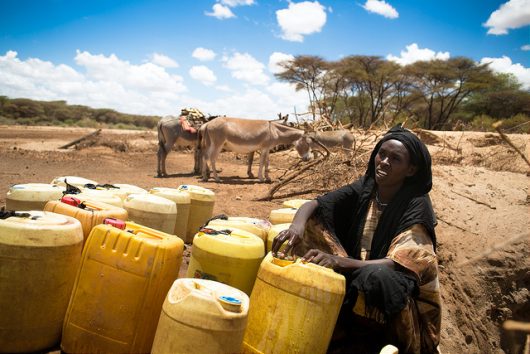The Water Project: How Poor Water Quality Impacts Kenyan Girls

The average American family uses roughly 552 gallons of water each day, while the average African family uses about five gallons of water per day. Girls in the sub-Saharan country of Kenya are robbed of their right to receive an education due to water scarcity.
Education Delayed Due to Water Scarcity
The literacy rate of females over the age of 15 in Kenya was 74 percent in 2016. The Education Policy and Data Center reported that 88 percent of children between the ages of six and 13 attend primary school; however, the report notes that many of the children attending primary school are outside of the official age range, meaning they are not attending school often enough to stay on schedule with the curriculum.
Instead of attending school, many girls spend their time carrying a 40-pound water can full of dirty water from sources miles away from their homes. This exhausting task leaves many girls unable to receive a formal education. Even if a girl is not burdened by the responsibility of journeying for hours to fetch water for her family, if schools cannot provide water, they are unable to run their programs.
How Does The Water Project Make a Difference?
The Borgen Project spoke with Lisa Sullivan, the director of marketing and communications at The Water Project, who provided insight into just how monumental of a difference it makes when clean water is readily accessible to girls.
The Water Project is a nonprofit organization located in Concord, New Hampshire that provides reliable water projects to communities in sub-Saharan Africa. In western Kenya, The Water Project sponsors a community-led organization that is represented by a powerful, strong Kenyan woman named Catherine Chepkemoi. This woman works for empowerment in Kenya, specifically for younger girls, by teaching them about hygiene and water sanitation.
Sullivan stated, “These women are essentially cultivating future women leaders. When they are not gathering water, they are able to stay in class and compete with the boys.”
The organization spends time in western Kenya, addressing water quality by installing rain tanks at schools and protecting springs. Eastern Kenya is constantly in a drought; the region once had four rainy seasons a year, but is now down to one. With such limited rainfall, the organization provides water for people to use for bathing and sanitation.
Improvements in Water and Education Have Wide-Ranging Effects
The Water Project website reports that “for every 10 percent increase in women’s literacy, a country’s whole economy can grow by up to 0.3 percent.” Women can increase economic growth because they tend to invest in their own communities. Women will invest in their children’s education because they aspire to send them to schools and college.
Sullivan points out that “once you bring in water, now not only are they eating healthy, they are not spending their money on medical bills, which allows them to save their money and place it back into their communities.”
If a community in Kenya invests in an irrigation pump, it will allow them to sell more goods, generate more income and expand the opportunity for families to send their children to college–all because of access to clean water.
The Water Project is supporting an agent of change for Kenyan women and girls. It continues to reinforce female empowerment and furnish clean water. Kenyan girls now have a better chance to gain an education and participate in the development of their country.
– Angelina Gillispie
Photo: Flickr
